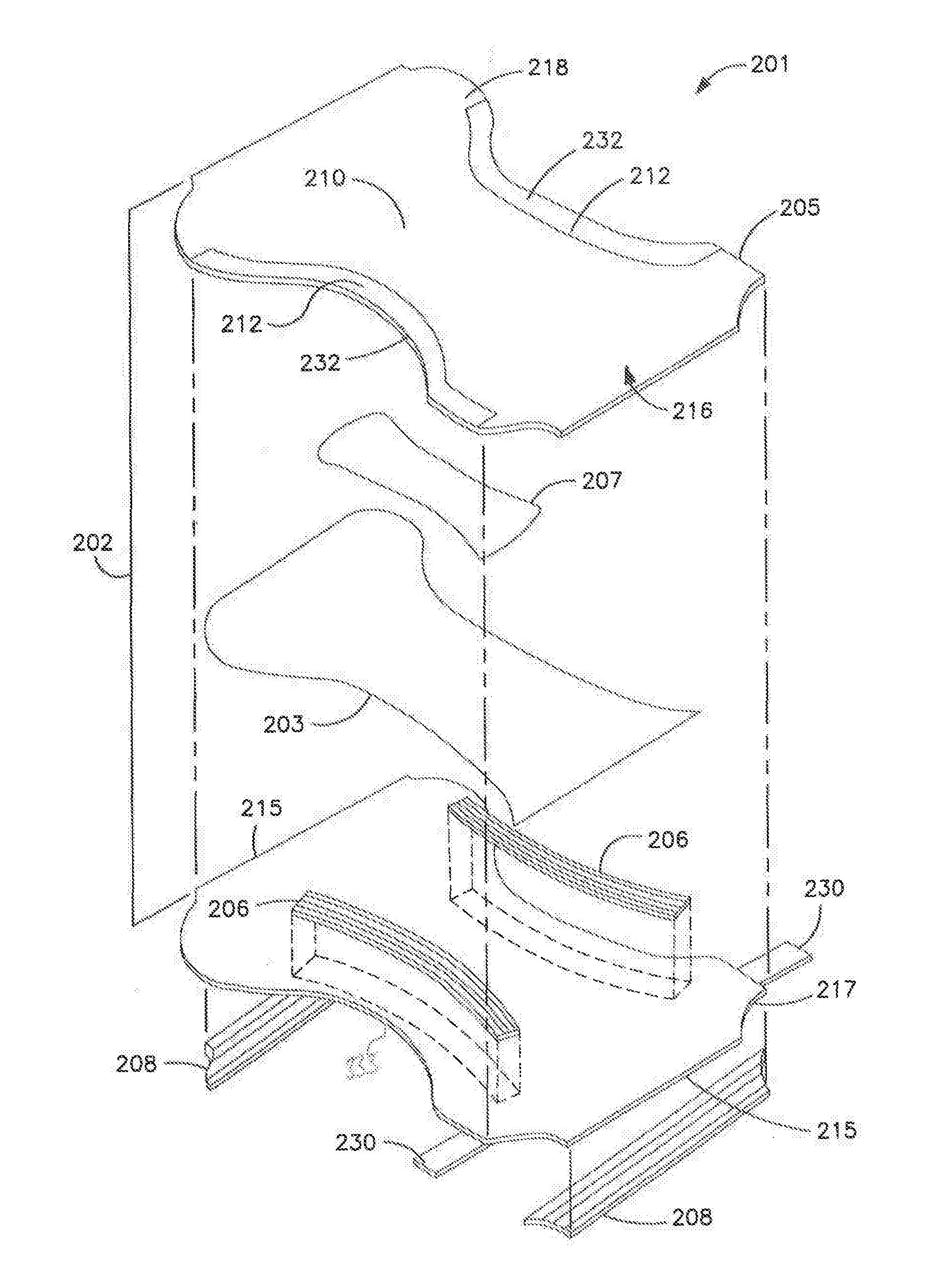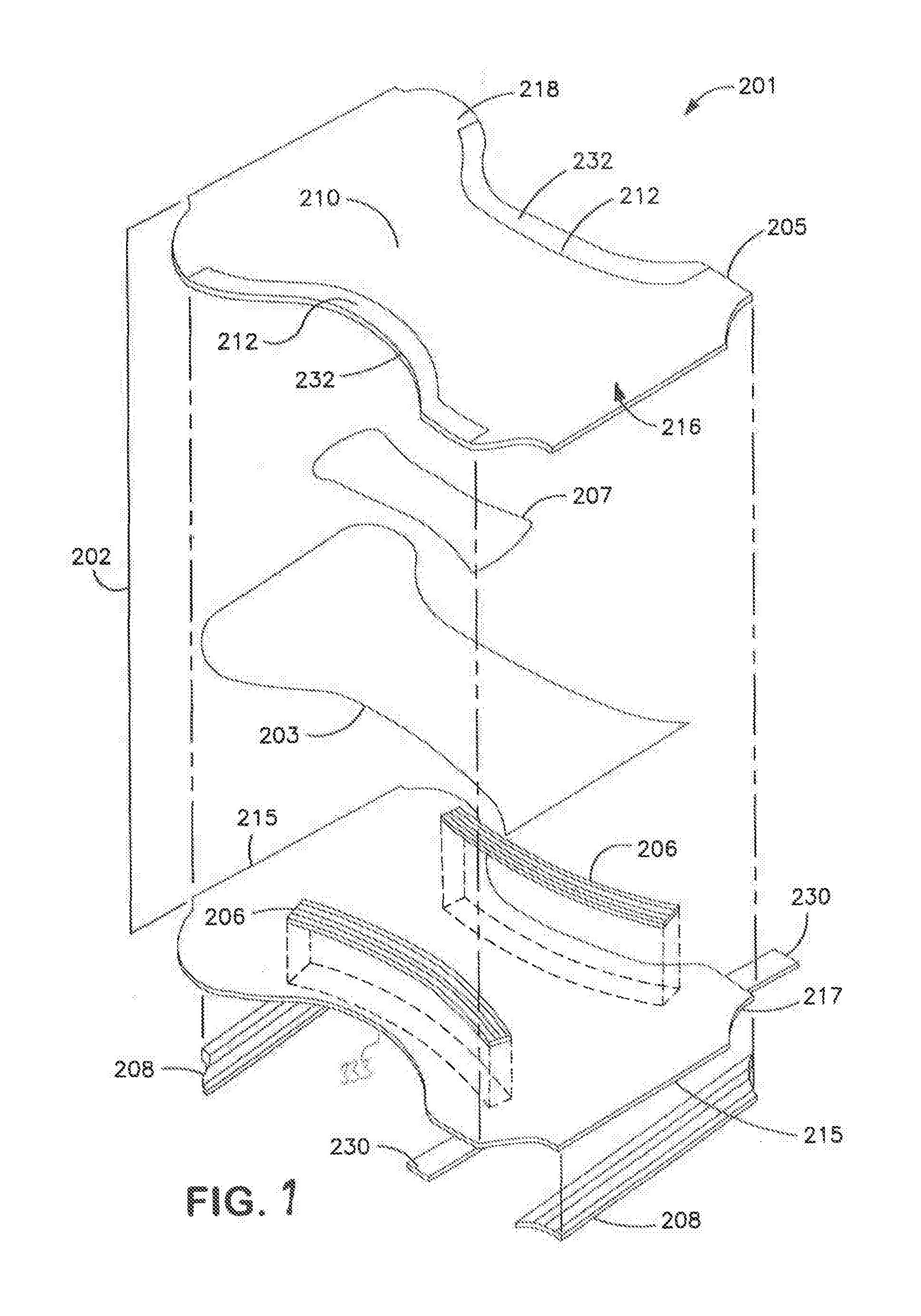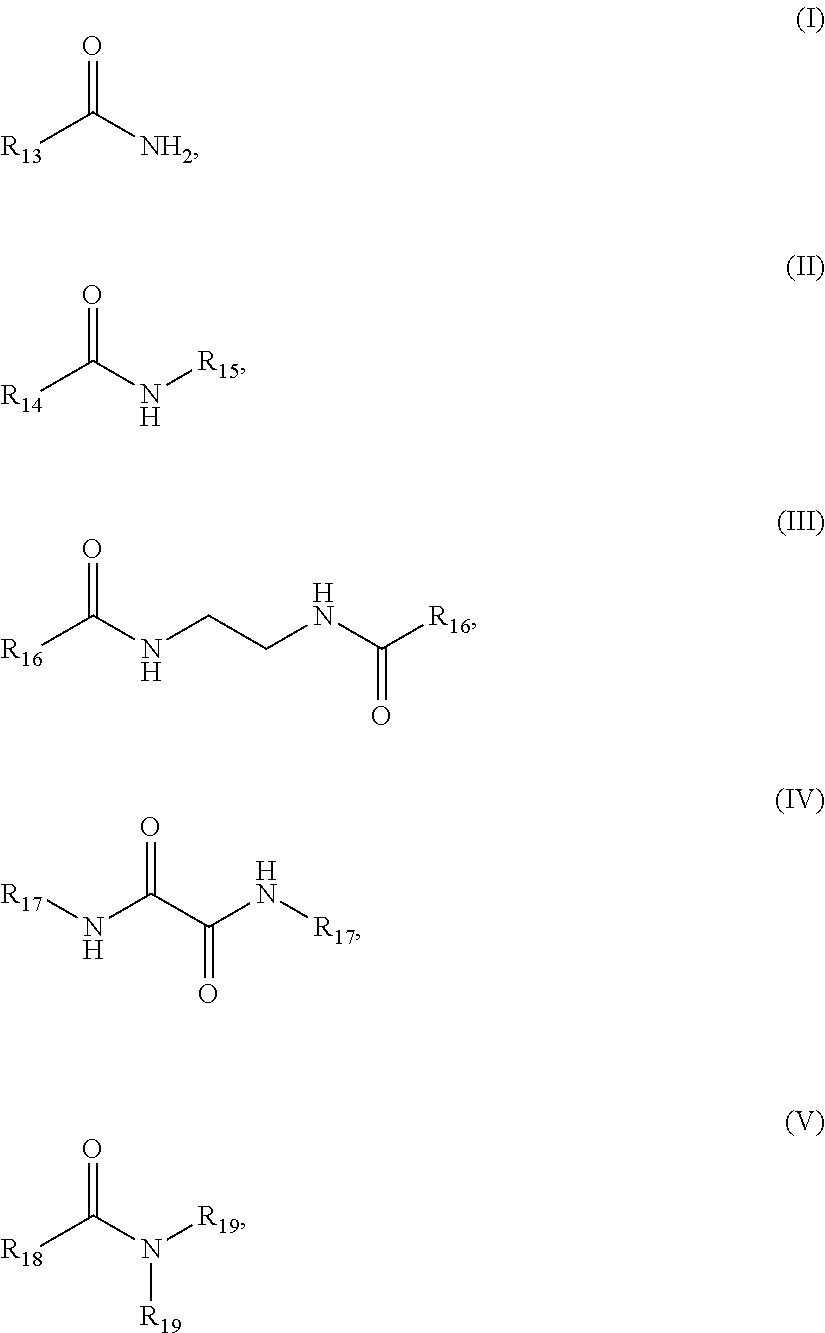Soft and Durable Nonwoven Composite
a non-woven composite, soft technology, applied in the direction of bandages, cleaning equipment, other domestic objects, etc., can solve the problems of increased degree of abrasion, general lack of softness, and trade-off between softness and fuzzing properties
- Summary
- Abstract
- Description
- Claims
- Application Information
AI Technical Summary
Benefits of technology
Problems solved by technology
Method used
Image
Examples
example 1
[0083]A first polyolefin composition was formed that contained 100 wt. % of a LLDPE polymer and a second polyolefin composition was formed that contained 97.4 wt. % of a rigid propylene homopolymer, 2.5 wt. % of a ductile propylene homopolymer, and 0.1 wt. % of erucamide. The rigid propylene polymer was PP 3155 (Exxonmobl), which has a density of 0.9 g / cm3, melting temperature of about 165° C., and a tensile modulus of about 1300 to 2000 MPa. The ductile propylene polymer was L-MODU™ S901 (Idemitsu), which has a density of 0.87 g / cm3, melting temperature of 70° C., and a tensile modulus of 80 MPa. The first polyolefin composition was spun to form a first nonwoven web using the following conditions: pump speed of 55 rpm, throughput of 194 kg / hr, melt temperature of 213° C., cabin pressure of 3000 bar, and process air temperature of 25° C. The second polyolefin composition was spun to form a second nonwoven web using the following conditions: pump speed of 55 rpm, throughput of 199 kg...
example 2
[0084]A nonwoven composite was formed as described in Example 1, except that the first polyolefin composition was spun to form a first nonwoven web using the following conditions: pump speed of 55 rpm, throughput of 195 kg / hr, melt temperature of 214° C., cabin pressure of 3000 bar, and process air temperature of 25° C. The second polyolefin composition was also spun to form a second nonwoven web using the following conditions: pump speed of 55 rpm, throughput of 199 kg / hr, melt temperature of 232° C., cabin pressure of 4400 bar, and process air temperature of 20° C. The resulting composite had a total basis weight of 16 gsm (each nonwoven web having a basis weight of about 8 gsm), and the fibers of both webs had an average size of about 1.5 μm.
example 3
[0085]A nonwoven composite was formed as described in Example 1, except that the first polyolefin composition was spun to form a first nonwoven web using the following conditions: pump speed of 55 rpm, throughput of 195 kg / hr, melt temperature of 214° C., cabin pressure of 3000 bar, and process air temperature of 25° C. The second polyolefin composition was also spun to form a second nonwoven web using the following conditions: pump speed of 55 rpm, throughput of 199 kg / hr, melt temperature of 239′C, cabin pressure of 4400 bar, and process air temperature of 20° C. The first and second nonwoven webs were then thermally bonded together between a calendar roll heated to 130′C and an embossing roll heated to 114° C., wherein the nip pressure was 100 N / mm. The bond pattern covered 18.5% of the area of the surface of the composite. The resulting composite had a total basis weight of 14 gsm (each nonwoven web having a basis weight of about 7 gsm), and the fibers of both webs had an averag...
PUM
| Property | Measurement | Unit |
|---|---|---|
| Temperature | aaaaa | aaaaa |
| Pressure | aaaaa | aaaaa |
| Pressure | aaaaa | aaaaa |
Abstract
Description
Claims
Application Information
 Login to View More
Login to View More - R&D
- Intellectual Property
- Life Sciences
- Materials
- Tech Scout
- Unparalleled Data Quality
- Higher Quality Content
- 60% Fewer Hallucinations
Browse by: Latest US Patents, China's latest patents, Technical Efficacy Thesaurus, Application Domain, Technology Topic, Popular Technical Reports.
© 2025 PatSnap. All rights reserved.Legal|Privacy policy|Modern Slavery Act Transparency Statement|Sitemap|About US| Contact US: help@patsnap.com



